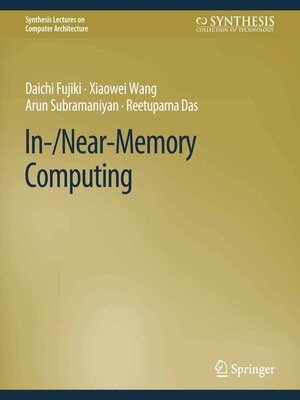
Sign up to save your library
With an OverDrive account, you can save your favorite libraries for at-a-glance information about availability. Find out more about OverDrive accounts.
Find this title in Libby, the library reading app by OverDrive.



Search for a digital library with this title
Title found at these libraries:
| Library Name | Distance |
|---|---|
| Loading... |
This book provides a structured introduction of the key concepts and techniques that enable in-/near-memory computing. For decades, processing-in-memory or near-memory computing has been attracting growing interest due to its potential to break the memory wall. Near-memory computing moves compute logic near the memory, and thereby reduces data movement. Recent work has also shown that certain memories can morph themselves into compute units by exploiting the physical properties of the memory cells, enabling in-situ computing in the memory array. While in- and near-memory computing can circumvent overheads related to data movement, it comes at the cost of restricted flexibility of data representation and computation, design challenges of compute capable memories, and difficulty in system and software integration. Therefore, wide deployment of in-/near-memory computing cannot be accomplished without techniques that enable efficient mapping of data-intensive applications to such devices,without sacrificing accuracy or increasing hardware costs excessively. This book describes various memory substrates amenable to in- and near-memory computing, architectural approaches for designing efficient and reliable computing devices, and opportunities for in-/near-memory acceleration of different classes of applications.







